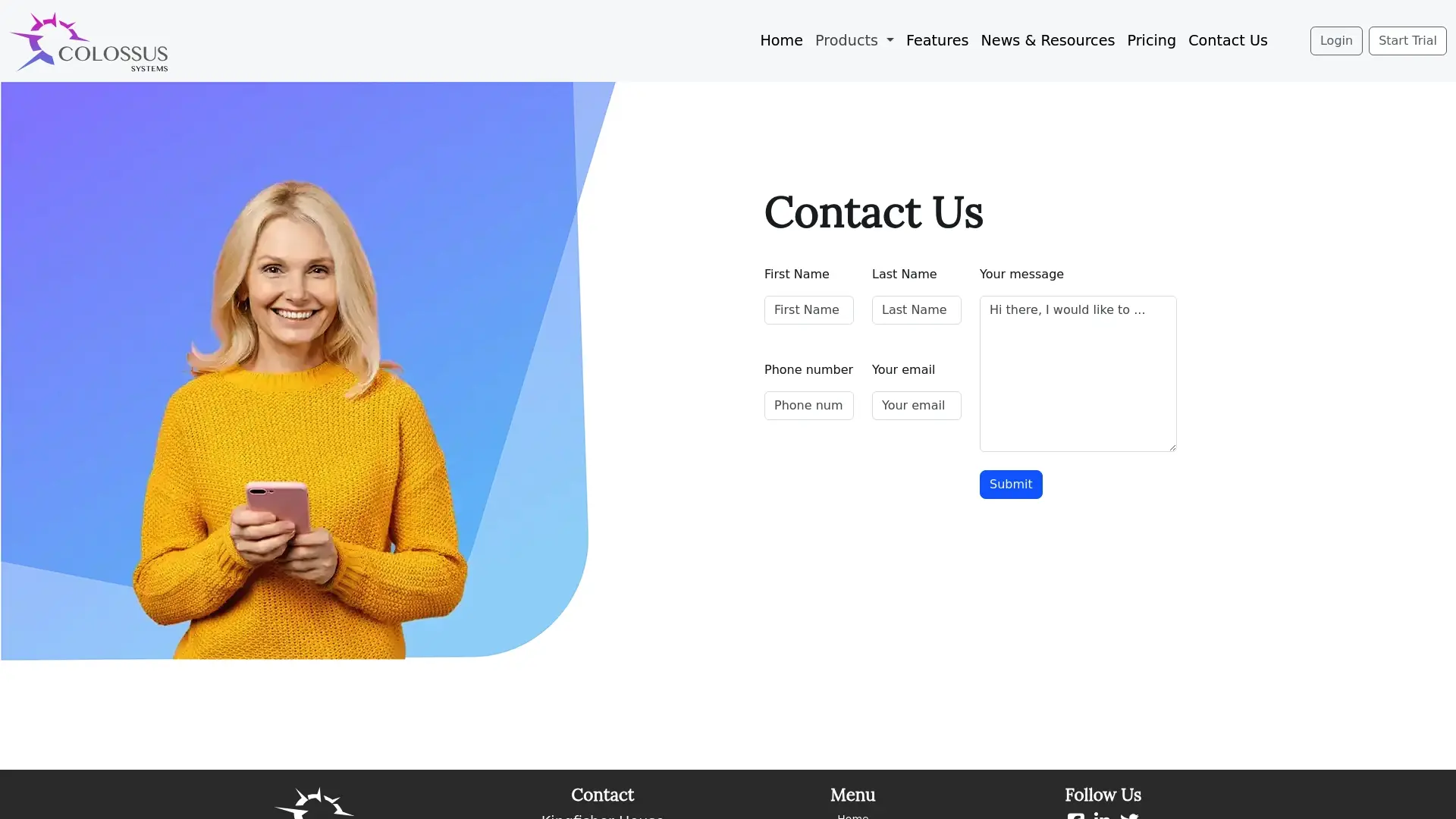How to Manage Membership Database for Seamless Growth

Nearly 60 percent of organizations struggle with incomplete or scattered member records, which can limit engagement and growth. Clear data structure and smart database tools make all the difference when it comes to managing relationships and serving members better. By learning the right way to design, secure, and optimize your membership database, you unlock smoother operations, safeguard sensitive information, and build lasting loyalty.
Table of Contents
- Step 1: Assess Current Membership Data Structure
- Step 2: Customize Database Features to Fit Organization Needs
- Step 3: Import and Organize Member Information Securely
- Step 4: Automate Member Engagement and Communication
- Step 5: Monitor, Audit, and Optimize Database Performance
Quick Summary
| Key Point | Explanation |
|---|---|
| 1. Assess your data structure first | Inventory existing data sources and map them out to identify gaps and overlaps. |
| 2. Customize database features strategically | Tailor data types and functions to meet specific operational needs and future growth. |
| 3. Ensure secure data import processes | Sanitize and standardize data before migration, implementing strong validation and encryption protocols. |
| 4. Automate member engagement processes | Develop automated workflows for personalized communication based on member behaviors and preferences. |
| 5. Monitor and optimize database continuously | Regularly review performance metrics and resource usage to maintain an efficient and responsive database system. |
Step 1: Assess Current Membership Data Structure
Assessing your membership data structure is a foundational step in creating a robust and scalable database. This process helps you understand your current organisational data landscape and identify opportunities for improvement.
Start by conducting a comprehensive inventory of your existing data sources. According to research from Harvard Business School, drafting a design plan and creating an entity-relationship diagram is crucial for documenting your data preparation and building strategy.
Begin by mapping out all the data points you currently collect about your members. These might include:
- Personal contact information
- Membership status and tier
- Payment history
- Event participation records
- Communication preferences
- Professional background details
As recommended by GUVI Blogs, create a conceptual data model that provides a high-level view of your data entities and their relationships. This step helps you understand how different pieces of information connect and interact within your membership ecosystem.
Pro Tip: Don’t just list data points. Consider how each piece of information serves your organisational goals and member experience.
Analyse the current data collection methods and identify any redundant or outdated information. Look for gaps in your data collection that might limit your understanding of members or hinder targeted communication strategies.
By thoroughly assessing your current membership data structure, you are laying the groundwork for a more intelligent and responsive database system. In the next step, you will begin the process of cleaning and standardising your existing data to prepare for migration or system upgrade.
Step 2: Customize Database Features to Fit Organization Needs
Customizing your membership database features is about creating a tailored solution that precisely matches your organisation’s unique requirements and workflow. This critical step transforms a generic database into a powerful tool that drives member engagement and operational efficiency.
According to research from Harvard Business School, choosing appropriate data types is fundamental when customising database features. Pay special attention to numeric columns, character fields, and date/time columns to ensure the database aligns perfectly with your organisational needs.
Start by identifying your specific operational requirements. What unique information does your organisation track? Consider features such as:
- Custom member segmentation fields
- Specialised reporting capabilities
- Automated communication triggers
- Integration points with existing systems
- Workflow automation options
7 Essential Strategies to Maximize Database Membership recommends selecting the smallest data type that can accommodate your expected data while maintaining performance and storage efficiency.
Pro Tip: Think beyond current needs. Build flexibility into your database design to accommodate future growth and changing membership models.
Consult with team members across different departments to understand their specific data requirements. This collaborative approach ensures your database serves multiple organisational objectives and captures nuanced member information.

By thoughtfully customising your database features, you create a dynamic system that adapts to your organisation’s evolving needs. The next step involves implementing these custom features and testing their functionality to guarantee optimal performance.
Step 3: Import and Organize Member Information Securely
Importing and organizing member information requires meticulous attention to security and data integrity. This critical step ensures your organisation protects sensitive member data while creating a structured and accessible database.
According to research from Harvard Business School, conducting test loads of tables during data import helps assess data type choices and uncover potential problems before they become significant issues.
Begin by preparing your existing member data for secure migration. This involves several key steps:
- Sanitise data by removing duplicate or outdated records
- Standardise data entry formats across all fields
- Create a comprehensive data mapping strategy
- Establish clear data validation rules
- Implement robust encryption protocols
Understanding Membership Management Software for Organisations highlights the importance of choosing secure import methods that maintain data confidentiality throughout the transfer process.
Pro Tip: Always maintain a backup of your original data before beginning the import process to prevent potential information loss.
Research from DataCalculus emphasises the critical nature of implementing robust access controls and conducting regular security audits to protect member information.
By carefully managing your data import and organization process, you create a secure foundation for your membership database.
The next step involves setting up appropriate user permissions and access controls to further protect your valuable member information.
Step 4: Automate Member Engagement and Communication
Automating member engagement and communication transforms how organisations interact with their membership base, creating personalised experiences that feel both efficient and thoughtful. This step bridges technology with meaningful connection, ensuring your members feel valued and understood.
According to research from AC MemberSmart, using customizable data fields allows organisations to track specific metrics like volunteer hours and event participation, enabling more targeted and intelligent communication strategies.
Begin by establishing automated communication workflows that respond to member behaviors:
- Create personalised welcome sequences for new members
- Design triggered email campaigns based on membership milestones
- Set up automatic renewal reminders
- Develop segmented communication paths
- Implement behaviour-based engagement triggers
Digital Communication Strategies for Member Organisations emphasises the importance of understanding member preferences to craft meaningful automated interactions.
Pro Tip: Always provide an easy opt out mechanism in automated communications to respect member preferences.
Research recommends creating member segments based on demographics and engagement levels to ensure each communication feels relevant and compelling. This approach transforms generic messaging into personalised experiences that resonate with individual members.
By thoughtfully automating your engagement strategy, you create a dynamic system that nurtures member relationships while reducing administrative workload. The next step involves monitoring and refining these automated communication channels to continuously improve member experience.
Step 5: Monitor, Audit, and Optimize Database Performance
Monitoring and optimizing your membership database performance is crucial for maintaining a responsive and efficient system that supports your organisation’s growth. This step ensures your database remains agile, secure, and capable of handling increasing member data and interactions.
According to research from the Nerdify Blog, comprehensive documentation and schema versioning are essential for maintaining long-term database health. These practices help track your database’s evolution and manage complex migration processes effectively.
Implement a systematic approach to database performance monitoring:
- Establish regular performance review schedules
- Track key performance indicators
- Monitor query response times
- Analyze resource utilization
- Review user access and interaction patterns
Membership Database highlights the importance of proactive performance management in maintaining a robust membership system.
Pro Tip: Set up automated alerts for performance anomalies to catch potential issues before they impact user experience.
Research from Harvard Business School recommends implementing index key columns to maximize efficiency during database operations, particularly for complex joins and sorting processes.
By consistently monitoring and optimizing your database, you create a resilient system that adapts to your organisation’s changing needs. The final step involves developing a continuous improvement strategy that keeps your membership database at peak performance.
Here’s a summary of the key steps in building a robust membership database:
![]()
| Step | Primary Focus | Key Actions |
|---|---|---|
| Step 1: Assess Data Structure | Evaluate current data | Inventory sources Identify gaps Map entities |
| Step 2: Customise Features | Tailor for organisation | Select data types Define segmentation Enable integration |
| Step 3: Import & Organise | Secure data migration | Sanitise data Standardise formats Enforce validation |
| Step 4: Automate Engagement | Improve communication | Personalised flows Email triggers Segmentation |
| Step 5: Monitor & Optimise | Enhance performance | Review metrics Resource analysis Apply indexes |
Streamline Your Membership Database for Seamless Growth
Managing a membership database can feel overwhelming, especially when trying to ensure data security, maintain engagement, and optimise performance all at once. The challenges discussed, such as customising database features, automating member communication, and securely importing data, highlight the need for a comprehensive, adaptable solution that grows alongside your organisation. If you are seeking a way to reduce administrative burdens while enhancing member experience, it is time to explore tailored technology designed specifically for your needs.

Discover how Colossus Systems empowers membership organisations to customise every aspect of their database—from member segmentation to integrated communication channels. Our SaaS platform offers a unified solution to streamline your data management, automate engagement strategies, and secure sensitive information without compromise. Take control of your organisation’s growth by visiting our contact page today and start transforming your membership management strategy into a seamless, scalable success. For more insight into how strategic database management can elevate your organisation, explore membership management best practices and learn to harness the power of integrated solutions with Colossus.
Frequently Asked Questions
How can I assess the current membership data structure for my organization?
Start by conducting a comprehensive inventory of all existing data sources. Map out data points like contact information and membership status to identify areas for improvement and gaps in your current setup.
What steps should I take to customize database features for my membership needs?
Begin by identifying your specific operational requirements, such as custom segmentation fields and automated communication triggers. Collaborate with team members to ensure the database accommodates various departmental needs while remaining flexible for future growth.
How do I securely import and organize member information into my database?
Prepare your member data by sanitizing it to remove duplicates and standardizing entry formats. Implement robust encryption protocols during the import process to maintain data confidentiality and integrity.
What are effective ways to automate member engagement and communication?
Establish automated communication workflows that trigger based on member behaviors, like sending welcome sequences for new members. Segment your communications to ensure they are relevant, aiming to enhance engagement rates by targeting specific member interests.
How can I monitor and optimize the performance of my membership database?
Implement a systematic review schedule to track key performance indicators and monitor query response times. Set up automated alerts for performance anomalies to address potential issues quickly, aiming to maintain optimal database efficiency.